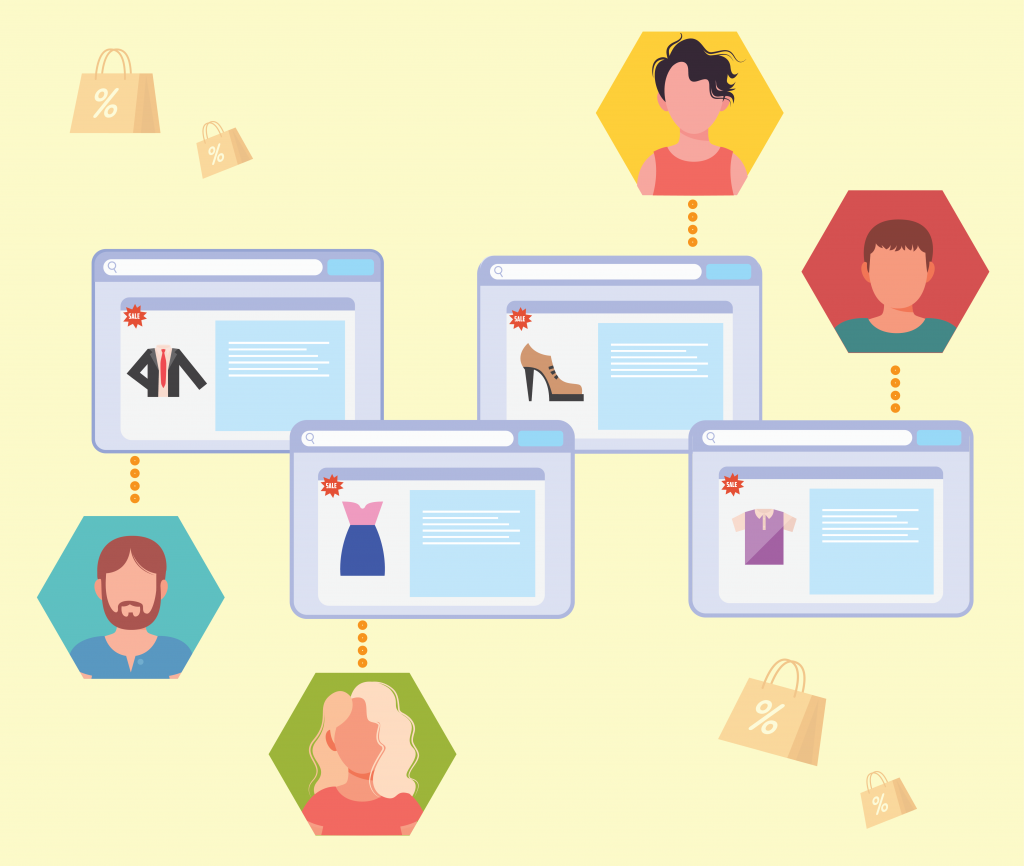In the modern age of marketing, segmentation and personalization are two powerful tools for driving customer engagement. But despite their similarities, segmentation and personalization have distinct meanings that should be understood before they are implemented in your email campaigns. In my opinion, these two terms are drastically different from each other.
In this blog post, we’ll explore the differences between segmentation and personalization to help you determine which strategy is best suited for your business needs. We’ll also discuss how dynamic content can play a role in maximizing the impact of both segmentation and personalization.
Let’s start by breaking down what segmentation is all about.
Segmentation gives you the opportunity to categorize your target audience and provide them with pertinent content that’s tailored specifically for them.
By utilizing persona-based segmentation, customers can be divided into distinct groups and provided with content catered to their needs. Data is collected and compiled to create sections based on shared qualities such as gender or preference (i.e., menswear, womenswear, home décor). Even more advanced analysis occurs by splitting customer type based off their buying habits – allowing for a truly tailored experience for each individual user.
As marketing professionals, we are skilled at placing people in the right buckets. However, what happens when customer preferences evolve and their needs change? Unfortunately, our segmentation approach can’t adapt easily to a changing landscape–once someone is placed into a pot they stay there for an extended period of time; meaning that the content being sent will eventually become outdated and irrelevant.

If a customer expresses interest in anything related to homes, it is important to note that they may not want to receive such content forever – maybe they were renovating and only wanted information about home-related items at the time or for a few months.
Additionally, the segmentation categories are generally broad to fit as many recipients into one category as possible. Being a woman does not necessarily make me more inclined towards female-targeted communications; especially if I recently browsed men’s clothing for my partner.
Segmentation can be tricky as people’s tastes and interests may evolve over time. What you purchased two years ago, or shared with me when signing up for my service, is no longer a reliable source to determine what you like today. Should we persist in segmenting users or look for better ways to establish true personalization that doesn’t become obsolete?
When we ask the people we speak to if they are personalizing their marketing, most of them respond that what they do is segmentation. Although this does provide some form of personalization, it’s not truly personalized since the content for each segment was initially considered appropriate for all individuals in that particular group. To get genuine customization results, you need to go beyond merely grouping and targeting your customers with generic messages – true individualized messaging requires a more advanced level of attention than just basic segmentation can offer.

Personalization can be as simple as a friendly “Hi Firstname,” but that is such an insignificant tactic that I won’t even consider it.
Tailoring emails specifically to each individual recipient, with content that is truly personalized and consistent, is what we call real email personalization.
Too often, email marketers feel like this goal is impossible to achieve without a lot of effort. This is because segmentation alone will not get you close enough to true 1-2-1 personalization – using dynamic content or segmented sends won’t be the answer either.
Here are a few examples of how a customer’s tastes and interests may evolve over time:
- A customer who has traditionally purchased only casual clothing begins to branch out and purchase more formal attire.
- A customer who has primarily purchased home decor items in the past starts to show an interest in outdoor gear and begins purchasing items like camping tents and backpacks.
- A customer who has always purchased budget-friendly items starts to express an interest in more high-end, luxury products.
- A customer who has mostly purchased products for themselves begins to purchase gifts for others, indicating a shift in their shopping priorities.
- A customer who has only purchased products from a particular brand or category begins to explore other options and diversify their purchases.
In all of these cases, the customer’s tastes and interests have evolved, and a company that is able to track and respond to these changes can use personalization to tailor their messaging and recommendations to the customer’s current interests.
To effectively launch a personalization campaign, data is the first thing to consider. The biggest challenge with personalization is recognizing and responding quickly to customer signals–a task that can be challenging for many businesses. Fortunately, single customer view databases are making it easier than ever before! While this has improved speed of processing data points, content creation remains an issue plaguing many companies on their journey towards successful personalization strategies.
Your CRM can give you access to a wealth of data, including past purchases, average order value, customer type and browsing habits. By using RetainIQ with this information from the CRM, it is possible to automatically personalize email content for each user based on their behavior and data. Let’s say your customers have browsed ‘dresses’, prefer buying ‘red’ items in ‘size 12’; when they open an email campaign from you – tailored just for them – red dresses will be presented in size 12! This level of customization ensures that personalized emails create greater engagement at every step of the customer journey.

With RetainIQ, you can easily craft individualized content for every contact in your CRM. We bridge the divide between personalized emails and dynamic content to deliver a tailored experience with no demanding conundrums. Our system uses your defined business rules along with product catalogs or Google shopping feeds to search out items that are most relevant to each recipient. Connecting real-time data from the CRM and email personalization has never been simpler!
Instead of dividing customers into categories with segmentation, you can now personalize content for each individual customer at a 1-2-1 level. Connecting CRM data to live images and merging product SKUs into tags makes it possible to deliver customized email content that is tailored specifically to them. Utilizing Content Automation allows you the opportunity to provide highly personalized emails designed just for your subscribers!
Our system automatically merges your product SKU from your ESP at the time of send and matches that information in a feed, displaying image content as soon as it is opened. A single setup allows for endless variation of personalized emails; what’s more, every opening will feature real-time data with updated prices, offers, and availability – so no need to worry about out-of-date messages!

If your CRM doesn’t contain this level of customer detail – that doesn’t matter. If you have category-based information such as whether a customer has a propensity to buy shoes, bags, shirts, dresses or sportswear for example, this information can be used to completely remove the requirement to build complex, dynamic content. It only needs to be setup once and will automatically display the the latest products from the propensity category by utilizing open time technology.
With content automation, you have the power to let your audience select what they want to receive. Leverage your CRM for real-time activity tracking so that the content is always relevant. By personalizing in this fashion, engagement from customers skyrockets – it’s a surefire formula for success!
Final words
Dynamic segmentation with Content Automation is the key to unlocking powerful 1-2-1 personalization, enabling marketers to provide the right content for each individual recipient. With segmentation you can only segment a group, but with RetainIQ’s personalized software, you can easily and efficiently segment customers at an individual level. By utilizing this tool, you will be able to maximize engagement and drive sales like never before! If all of these possibilities sound exciting then don’t wait any longer – sign up for RetainIQ today and unlock your full potential as a marketer!

